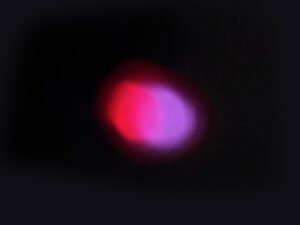Hidden cameras have been found in vacation rentals, invading guests’ privacy. Find and deactivate them or leave the rental.
 A group of women who booked an Airbnb on British Columbia’s Sunshine Coast are warning guests about vacation rental homes after they found hidden cameras in their bathrooms.
A group of women who booked an Airbnb on British Columbia’s Sunshine Coast are warning guests about vacation rental homes after they found hidden cameras in their bathrooms.
They were celebrating the 30th birthday of one of the women last month. One in the group had seen a video on the Internet about hidden cameras in vacation rentals. They looked around and found a camera in each of the two bathrooms in the rental. The cameras were hidden in broken power outlets facing each bathroom’s showers.
Celebrations, family gatherings or quiet weekends can be shattered by hidden cameras spying on guests at vacation rentals or hotels.
 The group reported what they found to the local police a few days later. It’s been reported that a Royal Canadian Mounted Police officer told the group they found the cameras in the rental house and are continuing to investigate.
The group reported what they found to the local police a few days later. It’s been reported that a Royal Canadian Mounted Police officer told the group they found the cameras in the rental house and are continuing to investigate.
There have been other cases. In 2021, guests at a Vrbo Texas ranch rental found a hidden camera in the master bedroom. Local law enforcement said the camera was disguised as a power adapter.
A woman from Chicago has sued Hilton Worldwide, claiming she was secretly filmed in her room’s bathroom while staying at a Hampton Inn and Suites in Albany, NY. She said that she became aware that she was recorded when a video of her was uploaded to a porn website and she began receiving emails about it.
Even cruise lines aren’t immune from spying on guests in compromising or personal circumstances.
There was an incident reported in March on MSC Cruises’ Meraviglia. According to reports, a male crew member secreted himself in a stall in a restroom on the ship and was using a smartphone to make videos of guests in the stalls beside his.
IPX1031 updated their 2019 survey of Airbnb guests, which said that 58 percent of those surveyed were worried about hidden cameras inside their vacation rentals, and 11 percent said they found a hidden camera in the Airbnb in which they stayed. The 2023 survey update showed similar results.
Airbnbs, like hotels, are strictly prohibited from concealing recording devices such as video cameras on their properties.
The hidden cameras that Airbnb renters have found in bathrooms and bedrooms contradict Airbnb privacy rules for security devices.
Airbnb states,
“Intentionally concealed recording devices (such as hidden security cameras) are never permitted.”
In other words, no matter where they are, hidden security cameras or any concealed recording devices (video or audio) aren’t permitted at an Airbnb property, whether in a bedroom, bathroom or common area such as a living room or dining room.
Airbnb has other specific rules about video cameras in Airbnb properties to preserve guest privacy.
Over the years, I’ve spoken to officials from hotel chains such as Marriott, Hilton, and Hyatt about privacy and security. Each has similar rules about security cameras and other recording devices in their guest rooms.
I haven’t been generally concerned about hidden cameras in hotels, but recently, with stories of hidden cameras in the news, I do at least a cursory check of any lodging in which I’m a guest, especially checking the bedroom area and bathrooms.
I have a nine-step process that you can use to hunt out and find hidden cameras.
Here are nine steps that you can use to hunt for hidden cameras:
1. Check for lights:
Many video cameras have small LED indicator lights on them to let users know they’re on and operating. Darken the rooms in which you’re looking for a camera by turning off the lights and closing the blinds. Then scan around for anything in the room that’s still emitting light. If you see a light, inspect its source carefully.
2. Check for reflections:
While the room is still dark, shine a flashlight all over each room. Look for small reflections of the flashlight. The reflections can be colored if the camera lens has been optically coated. The reflection could be white, blue, purple or green. If you see a small reflection, inspect its source carefully.
3. Scan for infrared light:
Many hidden cameras emit infrared (IR) light while they’re in use. IR light is invisible to the naked eye, but many smartphones’ main cameras can detect it. If your smartphone is IR capable, with your room still dark, scan it with your smartphone’s camera to see if it detects purple or white light on its screen that you can’t otherwise see. If it’s there, search for the camera. Using a typical TV remote, you can test your smartphone to determine if it’s IR-capable. Please take a photo of it when you activate its signal with one of its buttons, like in the image above.
4. Check for suspicious items:
Once you turn the lights in the room back on and open any blinds, walk your rooms and look for anything that appears suspicious, out of place or something that shouldn’t be in the room. Pay particular attention to clocks, smoke detectors, wall decorations, USB chargers, and clock radios. They’re known to have been used to secret video cameras.
5. Check all mirrors:
Next, check to see if any mirrors in the room are two-way. They can hide a video camera behind them. Place the tip of a finger on the surface of the mirror. Look at the gap between your fingertip and its reflection. If there’s a visible gap between them, it’s a real mirror. If your fingertip and its reflection touch tip to tip, it may be a two-way mirror.
6. Scan the local WiFi network:
Download a network scanning app to your smartphone. Connect to the local WiFi network, then see if any device names are listed on the scan that you don’t recognize or are suspicious. If you see one, try to find the device to determine what it is.
7. Listen for interference on phones:
Some hidden cameras emit radio waves that can cause annoying sounds when you make a cellphone or cordless phone call. Call someone and walk all over your rooms to listen for interference. If you hear any, look for a hidden camera near where you heard interference.
8. Use a hidden camera detector app:
Most smartphone detector apps aren’t free. Many have a monthly charge, but they can give you a leg up as they typically use Wi-Fi, Bluetooth scanning, and infrared detection to find a camera in your room(s).
9. Use a hidden camera detector:
There are many hidden camera detector devices available for purchase. Prices for the devices run from about $20 to more than $1,000. According to the model, they use multiple scanning methods to detect hidden cameras.
I don’t know if purchasing an expensive hidden camera detector or an inexpensive one will work. If you’re worried about your Airbnb or hotel room, using the first seven methods I’ve listed above has a solid chance of finding a hidden camera, if there is one. While each person has to decide if they’re concerned about hidden cameras, when I get to my hotel room, I typically check the room for bedbugs first and often, at least for the bathroom, look next for signs of a hidden camera. There are too many crazy people these days to ignore them.

READ ALSO:
Travelers United $1 a week: Fly Rights App, Secure WiFi, Password Manager
Resort fees may end deception at Marriott this month
After many years working in corporate America as a chemical engineer, executive and eventually CFO of a multinational manufacturer, Ned founded a tech consulting company and later restarted NSL Photography, his photography business. Before entering the corporate world, Ned worked as a Public Health Engineer for the Philadelphia Department of Public Health. As a well known corporate, travel and wildlife photographer, Ned travels the world writing about travel and photography, as well as running photography workshops, seminars and photowalks. Visit Ned’s Photography Blog and Galleries.



